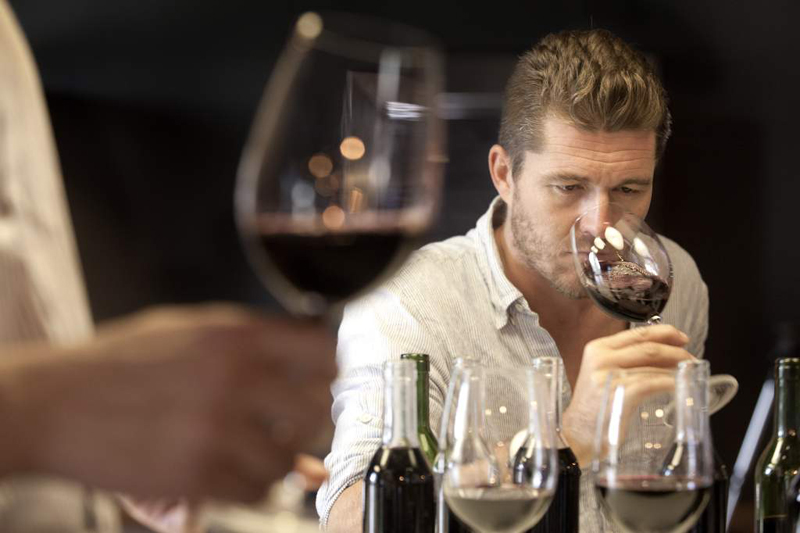Despite dreaming of taking on the Iron Man triathlon challenge, Gonzalo Carrasco was destined to be a winemaker, surrounded as he was by the vineyards of his native Mendoza, in Argentina’s mid-west, in a region of foothills and high plains on the eastern side of the Andes. Sitting beside him – we are in the Gaucho restaurant facing Tower Bridge in London – is a Frenchman, Christophe Chauvet, Development Director Europe & Afme for Estates & Wines, whose fate was also perhaps sealed by the rich terroir he first set foot on as a child in the Loire valley. Blood will out, as will the grape’s juices, it seems.
On offer with each course are a couple of Terrazas wines: the newish kid on the block, the pale yellow Torrentés Reserva 2011, an intense Chardonnay 2010 and the Malbecs, which are gradually becoming a fixture on European dining tables. Having two experts opposite you can be a bit intimidating unless you just let them do the talking and content yourself with sniffing and nodding wisely.
When the Argentinian steaks arrive, the spicy, red fruited Malbec Reserva 2009 comes into its own – they were made for each other. There is a respectful silence as we tuck in. It’s quite simply the best steak I have ever tasted – just pink enough in the centre with the lightest of seared crusts.
So what of this stream of bottles in red and white? “They are from Mendoza, close to the Andes, just as I am,” says Gonzalo. “The vines grow on the terraces of the hillsides from 980 metres for the Cabernet Sauvignon, 1,220 for the Chardonnay and 1,800 meters for the Torrentés, depending on what each variety needs in terms of soil and temperature. I studied oenology in Mendoza and I have been a winemaker ever since.”
Southern Europeans arrived in Argentina and brought knowhow that saw winemaking expand rapidly in the late 1800s. Today, Mendoza is one of only nine cities worldwide that make up the Great Capitals of Wine network – the region boasts 800 wineries producing ten million hectolitres of wine annually. The climate is ideal for the vine, warm in the summer and not too cold in the winter (especially helpful during winter dormancy). But the semi-arid desert conditions mean that sophisticated irrigation systems are vital.
‘Save your best wine till last’ runs the saying, and this is no exception. For dessert (in my case cheese) we try the Single Vineyard Malbec 2007 and it does not disappoint. Gonzalo explains, “It’s from an old vineyard (planted in 1929) so we only make a certain number of bottles.” Christophe adds: “4,000bottles in the whole of Europe. It’s a complex wine, with plenty of body. “I wonder how they avoid being dropped into that rather large basket marked ‘New World’. Christophe says, “By talking about variety, by concentrating on the unique geographical location, by making it stand out by its flavours.”
Our long lunch ends rather abruptly since this has been a pre-theatre meal of sorts – we have a boat to catch for the 02 arena and a polo match. And that is where I meet the third of these winemakers, Nicolas Audebert, manager and winemaker for Cheval des Andes and Terrazas de los Andes. He left France for Argentina twelve years ago and has put down roots there. Next to oenology, polo is his favourite subject. “We have a polo pitch at the vineyards in Mendoza. I really love it.”
In between explaining all about ‘chukkas’ and mallets and pony changeovers, he sketches in my notepad a topographical view of what makes Mendoza’s geographical location so important. It’s a flatline rising dramatically when it suddenly becomes the Andes. “Where we are is important because of the two oceans. The Atlantic feeds colder air from the east and the Andes provide a block for air that might be too warm from the Pacific, stops us from overheating – but we still get the benefit from the Pacific as its air comes over and through the mountains. It’s the bioceanic corridor.”
I watch the polo and listen to the thunder of the hooves and the thwack of mallet on ball and wonder what those gauchos of old would think of all this. They roamed the pampa, content with their simple recado, which acted as both saddle on horseback and blanket at nighttime as they slept beneath the stars. As it still is for many Argentinians, the gaucho’s drink of choice was maté, an infusion made by steeping dried leaves of the yerba mate plant in hot water but I’d like to think he would not say ‘¡No, gracias!’ to a glass of Malbec.







